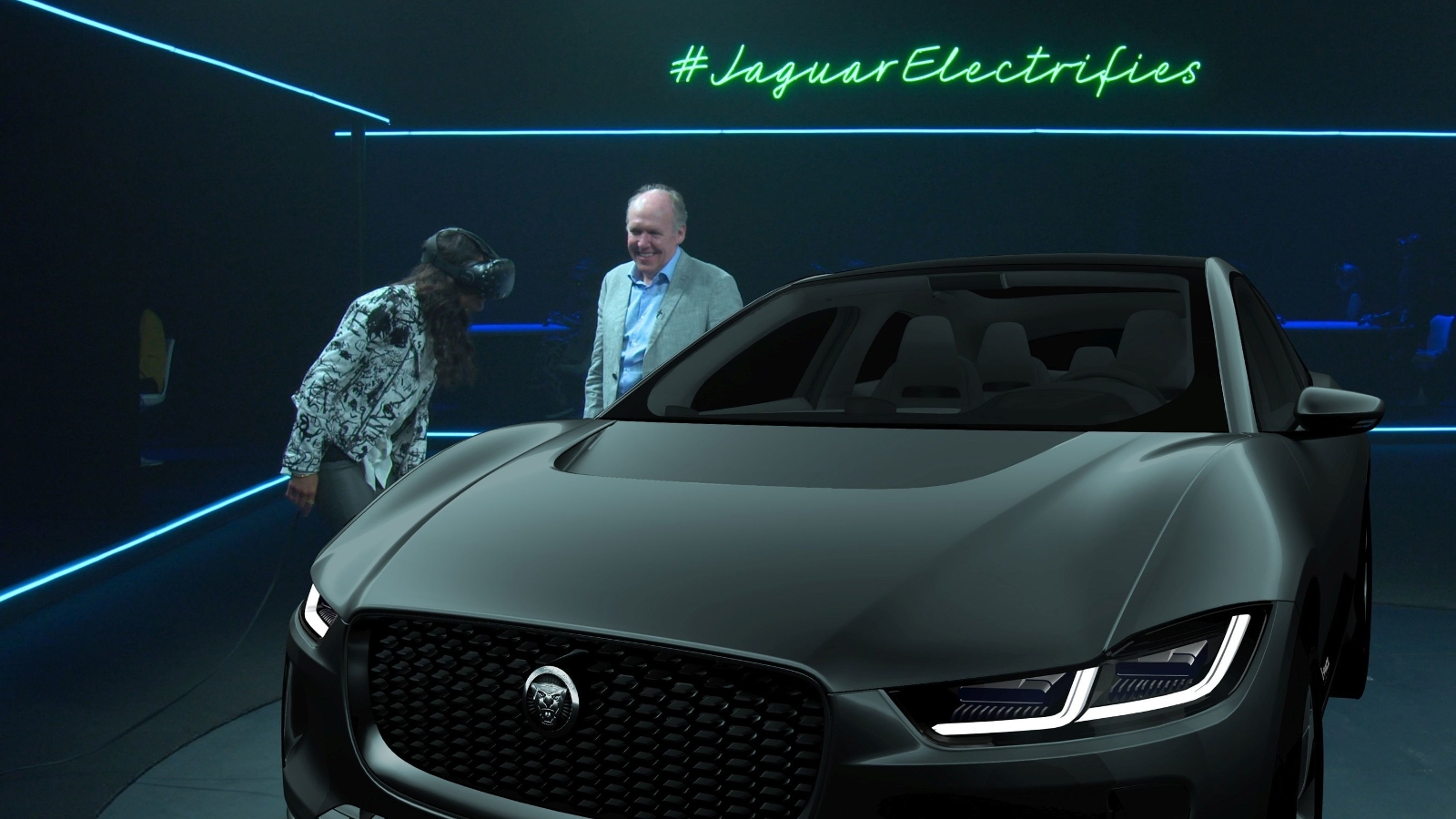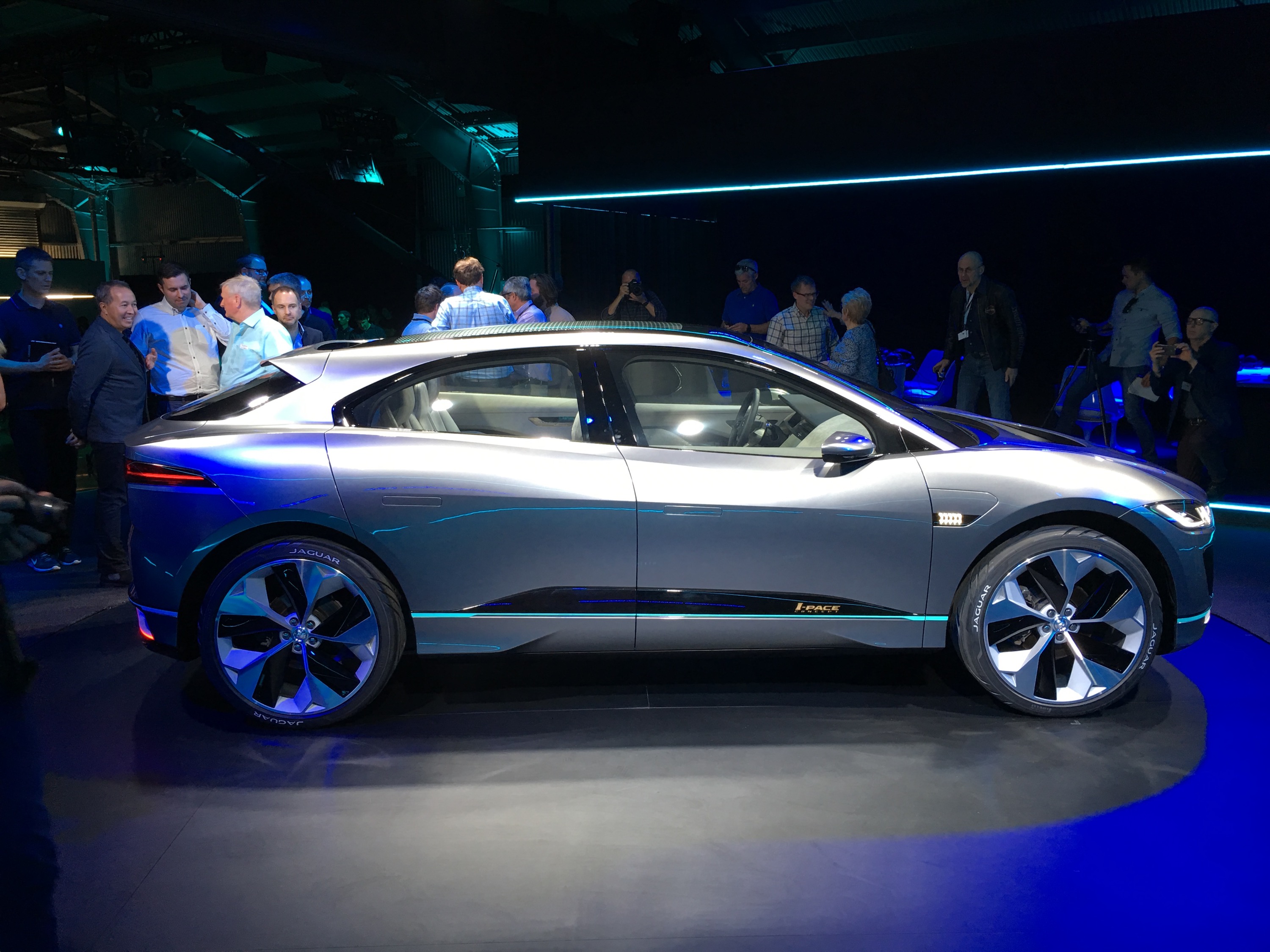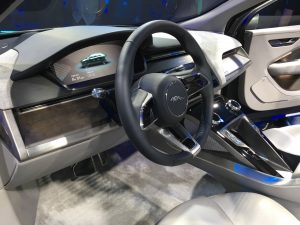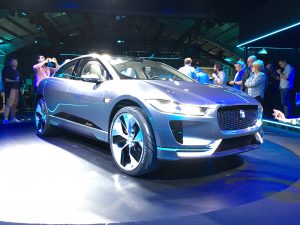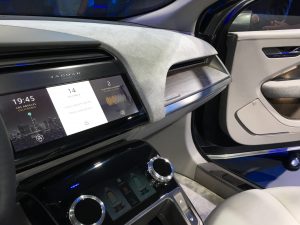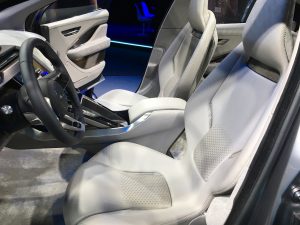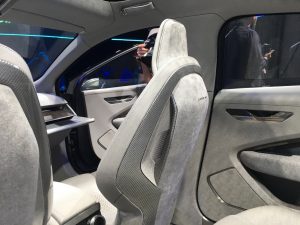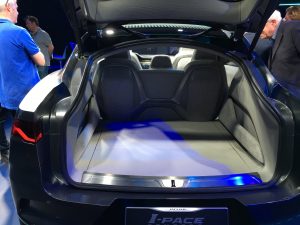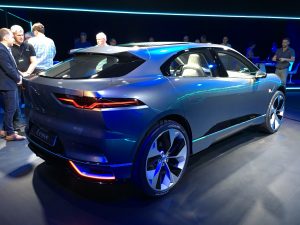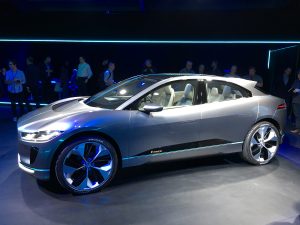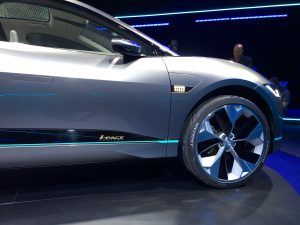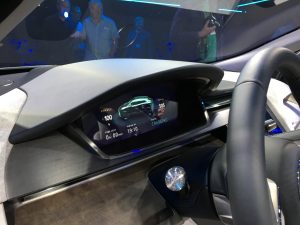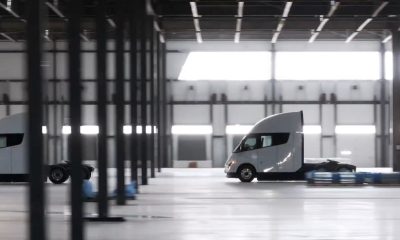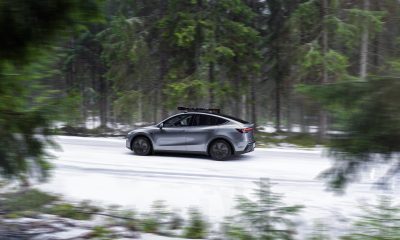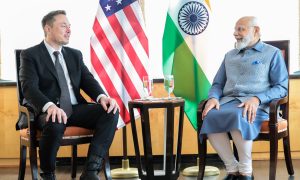The audience put on their HTC Vive headsets, which allowed everyone to see each other at their tables with color-coded avatars. A virtual mini slot car track appeared, and each person grabbed a single Vive controller and competed with others at their tables. Little Jaguar slot cars flew around and off the virtual track. Conversations erupted and interactions flourished as the audience played and waited. Soon, a presenter via live local video feed arrived, and the virtually-enhanced room suddenly filled with the avatars of all 66 people present, interconnecting everyone through virtual reality (VR).
The video feed switched everyone’s attention. It outlined Jaguar’s journey from its founding as the Swallow Sidecar Company in 1922, to this moment in time prior to the 2016 LA Auto Show, with the flashy reveal of a concept version of its I-Pace all electric sport utility vehicle.
The Jaguar I-Pace Concept is essentially a direct competitor to Tesla’s Model X P90D, with a dual motor design and 90 kWh battery that puts out an equivalent of about 400 horsepower and 700 ft. lbs. of torque. The Jaguar model is 12″ shorter, 3″ narrower, and a tiny bit taller than the Tesla product. It will feature a 90 kWh battery that should give the car approximately 300 miles of range using the U.S. testing standard. The battery should be able to recharge to 80% in just an hour and a half. The Jaguar electric powered SUV is purported to be capable of going from 0 to 60 mph in roughly four seconds. Jaguar is hoping to bring the vehicle into production sometime in 2018.
Yes, the Jaguar I-Pace is supposed to compete against the Tesla Model X. But the Jaguar VR press statement experience, using presenters, 3D models, diagrams, animations, and designs — generated through a Jaguar partnership with the Imagination Agency and help from REWIND, HTC, and Dell — far exceeded any hard-to-hear Tesla press conference or Elon Musk live appearance with poorly supported PowerPoint in the background.
- The Jaguar I-PACE.
Photo credit: caradvice.com.au
Early into Jaguar’s virtual reality press statement, Ian Callum, Jaguar’s famous designer, was introduced. He shared a think-aloud about the I-Pace design. True to Callum’s mantra that “It’s about beauty of line and purity of form,” he displayed interactive sketches, wire meshes, battery packs, motors, and other parts of the I-Pace vehicle that will work together in a gestalt. Each member of the audience fully interacted with the same 3D models as he discussed them. Because all headsets were interconnected, two groups of people participating from the UK were able to join in through virtual connecting. While users peered inside a finished Jaguar I-Pace prototype, an actual, real-world version of the vehicle was rolled into the room.
According to audience members present, the overall design, implementation, and explanation of the Jaguar I-Pace was nearly perfectly executed in VR and offered a never-before-experienced sense of product engagement and immersion. Many people left the Jaguar VR press statement convinced of the vehicle’s attributes, design, and performance as well as its capacity to compete fully against Tesla.
And they never learned the price of the Jaguar I-Pace.
[Shout out to Anshel Sag for sharing his VR experience]
News
Tesla Semis to get 18 new Megachargers at this PepsiCo plant
PepsiCo is set to add more Tesla Semi Megachargers, this time at a facility in North Carolina.
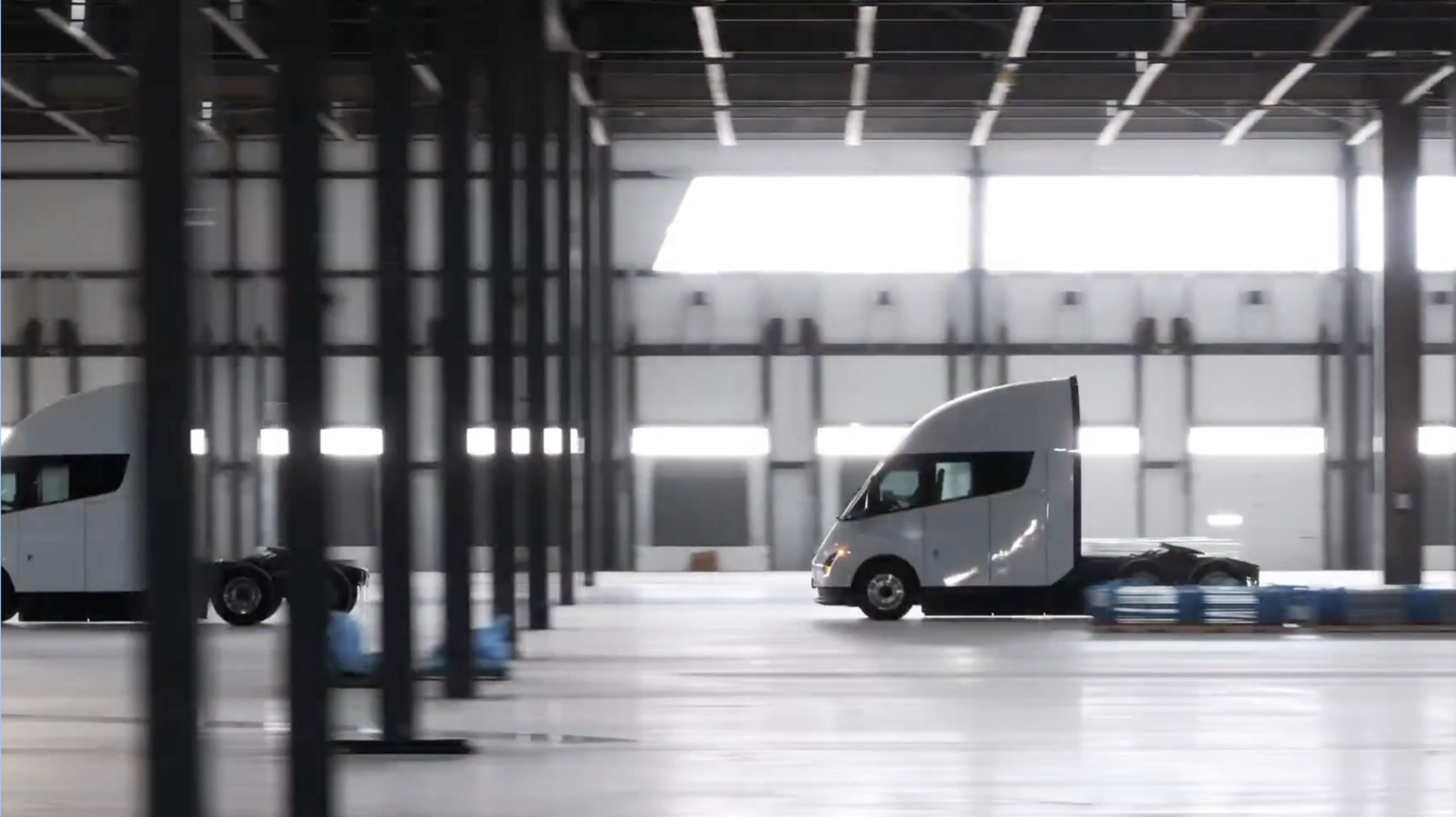
Tesla partner PepsiCo is set to build new Semi charging stations at one of its manufacturing sites, as revealed in new permitting plans shared this week.
On Friday, Tesla charging station scout MarcoRP shared plans on X for 18 Semi Megacharging stalls at PepsiCo’s facility in Charlotte, North Carolina, coming as the latest update plans for the company’s increasingly electrified fleet. The stalls are set to be built side by side, along with three Tesla Megapack grid-scale battery systems.
The plans also note the faster charging speeds for the chargers, which can charge the Class 8 Semi at speeds of up to 1MW. Tesla says that the speed can charge the Semi back to roughly 70 percent in around 30 minutes.
You can see the site plans for the PepsiCo North Carolina Megacharger below.
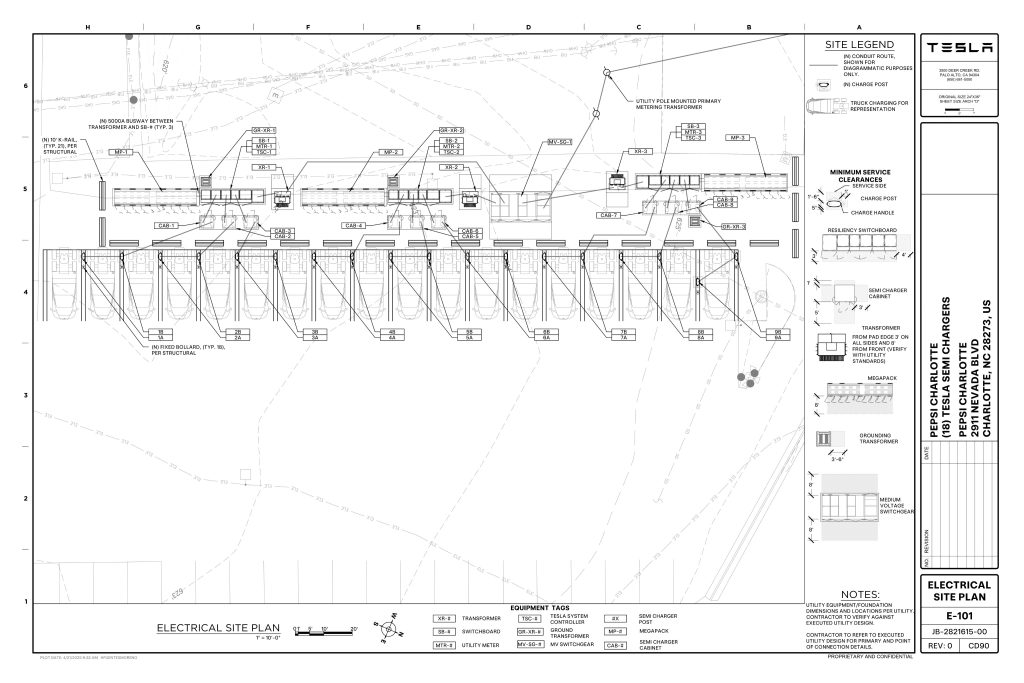
Credit: PepsiCo (via MarcoRPi1 on X)
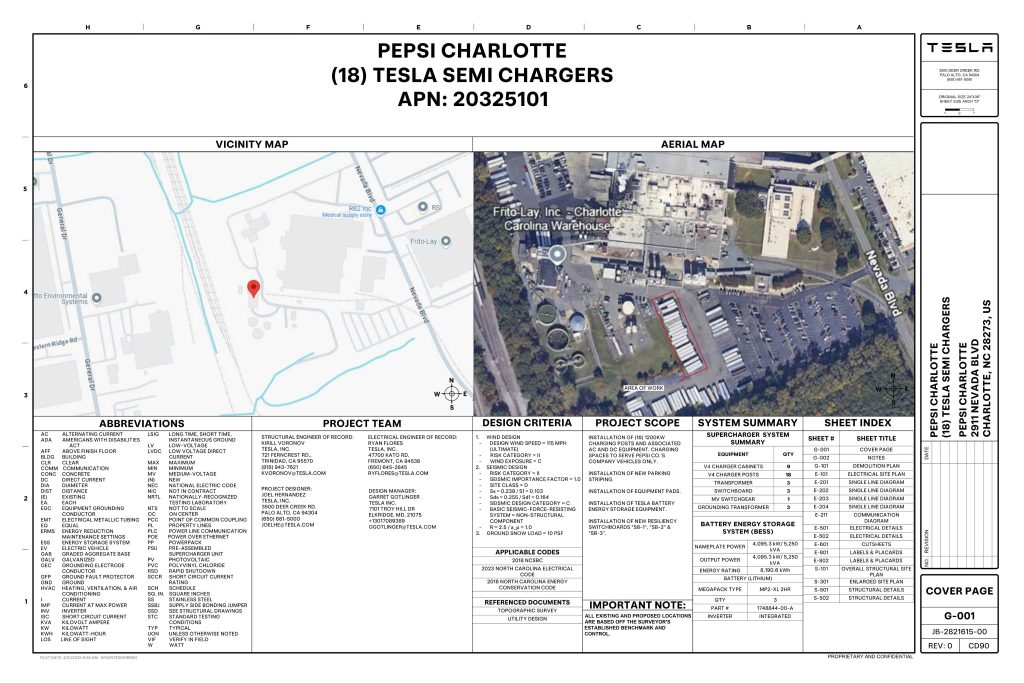
Credit: PepsiCo (via MarcoRPi1 on X)
READ MORE ON THE TESLA SEMI: Tesla to build Semi Megacharger station in Southern California
PepsiCo’s Tesla Semi fleet, other Megachargers, and initial tests and deliveries
PepsiCo was the first external customer to take delivery of Tesla’s Semis back in 2023, starting with just an initial order of 15. Since then, the company has continued to expand the fleet, recently taking delivery of an additional 50 units in California. The PepsiCo fleet was up to around 86 units as of last year, according to statements from Semi Senior Manager Dan Priestley.
Additionally, the company has similar Megachargers at its facilities in Modesto, Sacramento, and Fresno, California, and Tesla also submitted plans for approval to build 12 new Megacharging stalls in Los Angeles County.
Over the past couple of years, Tesla has also been delivering the electric Class 8 units to a number of other companies for pilot programs, and Priestley shared some results from PepsiCo’s initial Semi tests last year. Notably, the executive spoke with a handful of PepsiCo workers who said they really liked the Semi and wouldn’t plan on going back to diesel trucks.
The company is also nearing completion of a higher-volume Semi plant at its Gigafactory in Nevada, which is expected to eventually have an annual production capacity of 50,000 Semi units.
Tesla executive teases plan to further electrify supply chain
News
Tesla sales soar in Norway with new Model Y leading the charge
Tesla recorded a 54% year-over-year jump in new vehicle registrations in June.
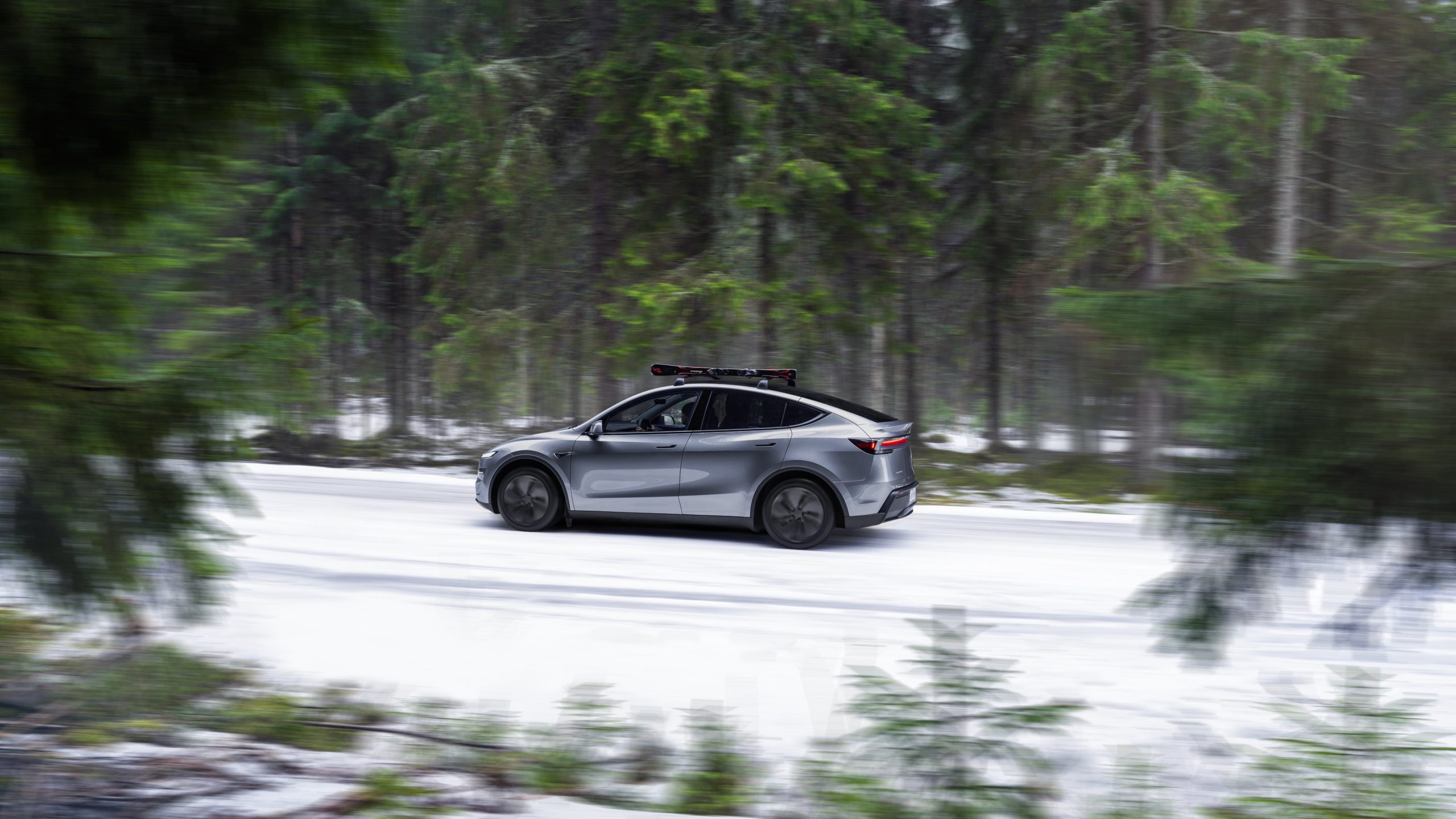
Tesla is seeing strong momentum in Norway, with sales of the new Model Y helping the company maintain dominance in one of the world’s most electric vehicle-friendly markets.
Model Y upgrades and consumer preferences
According to the Norwegian Road Federation (OFV), Tesla recorded a 54% year-over-year jump in new vehicle registrations in June. The Model Y led the charge, posting a 115% increase compared to the same period last year. Tesla Norway’s growth was even more notable in May, with sales surging a whopping 213%, as noted in a CNBC report.
Christina Bu, secretary general of the Norwegian EV Association (NEVA), stated that Tesla’s strong market performance was partly due to the updated Model Y, which is really just a good car, period.
“I think it just has to do with the fact that they deliver a car which has quite a lot of value for money and is what Norwegians need. What Norwegians need, a large luggage space, all wheel drive, and a tow hitch, high ground clearance as well. In addition, quite good digital solutions which people have gotten used to, and also a charging network,” she said.
Tesla in Europe
Tesla’s success in Norway is supported by long-standing government incentives for EV adoption, including exemptions from VAT, road toll discounts, and access to bus lanes. Public and home charging infrastructure is also widely available, making the EV ownership experience in the country very convenient.
Tesla’s performance in Europe is still a mixed bag, with markets like Germany and France still seeing declines in recent months. In areas such as Norway, Spain, and Portugal, however, Tesla’s new car registrations are rising. Spain’s sales rose 61% and Portugal’s sales rose 7% last month. This suggests that regional demand may be stabilizing or rebounding in pockets of Europe.
News
Tesla to open first India experience center in Mumbai on July 15
The event is scheduled for July 15 at the Bandra Kurla Complex, a premier business district in Mumbai.
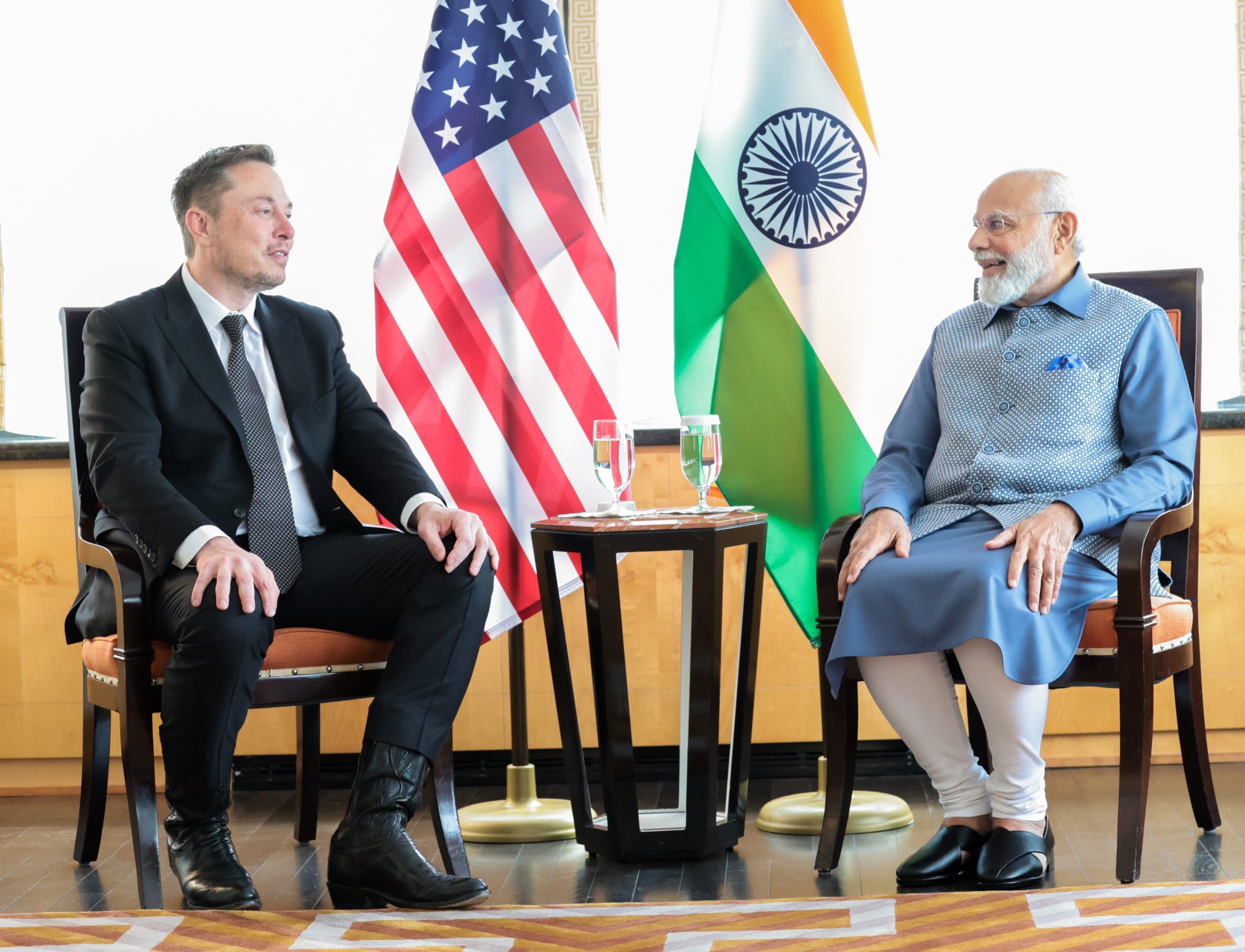
Tesla is officially entering India with the opening of its first showroom and experience center in Mumbai next week. The event is scheduled for July 15 at the Bandra Kurla Complex, a premier business district in Mumbai.
Tesla imports to India signal an early-stage market entry strategy
According to Indian customs data, Tesla has imported approximately $1 million worth of vehicles, charging equipment, and merchandise into the country between January and June. The shipments include six Model Y comprised of five standard variants valued at $32,500 each and one long-range model valued at $46,000. Several Superchargers and related accessories were also imported into the country, as noted in a Yahoo Finance report.
These vehicles are expected to serve as display models and test units as Tesla gauges interest and navigates India’s high import duties, which hover around 70% on fully built vehicles. Despite the significant tariffs in the country, Tesla has opted to begin its India expansion with imported cars.
An invitation to the Tesla India launch event has been making the rounds online. As could be seen in the document, Tesla noted that July 15 would be the launch of Tesla in India through the opening of a Tesla experience centre at Bandra Kurla Complex in Mumbai.
Tesla India’s hiring and expansion efforts are underway
Tesla has filled a number of key roles from the 30+ positions it advertised earlier this year. Recent hires include store managers, service executives, and sales staff, while ongoing recruitment is focused on supply chain engineers and vehicle operators to support the company’s Autopilot program.
Indian officials have been open about their intention to encourage Tesla to establish a manufacturing hub in the country. Tesla does seem open to the idea, at least, with reports last year hinting that Elon Musk was set to visit the country to discuss or even potentially announce a domestic project. The trip, however, was ultimately canceled.
-

 Elon Musk2 weeks ago
Elon Musk2 weeks agoTesla investors will be shocked by Jim Cramer’s latest assessment
-

 Elon Musk1 day ago
Elon Musk1 day agoxAI launches Grok 4 with new $300/month SuperGrok Heavy subscription
-

 Elon Musk4 days ago
Elon Musk4 days agoElon Musk confirms Grok 4 launch on July 9 with livestream event
-

 News1 week ago
News1 week agoTesla Model 3 ranks as the safest new car in Europe for 2025, per Euro NCAP tests
-

 Elon Musk2 weeks ago
Elon Musk2 weeks agoA Tesla just delivered itself to a customer autonomously, Elon Musk confirms
-

 Elon Musk1 week ago
Elon Musk1 week agoxAI’s Memphis data center receives air permit despite community criticism
-

 News2 weeks ago
News2 weeks agoXiaomi CEO congratulates Tesla on first FSD delivery: “We have to continue learning!”
-

 News2 weeks ago
News2 weeks agoTesla sees explosive sales growth in UK, Spain, and Netherlands in June

